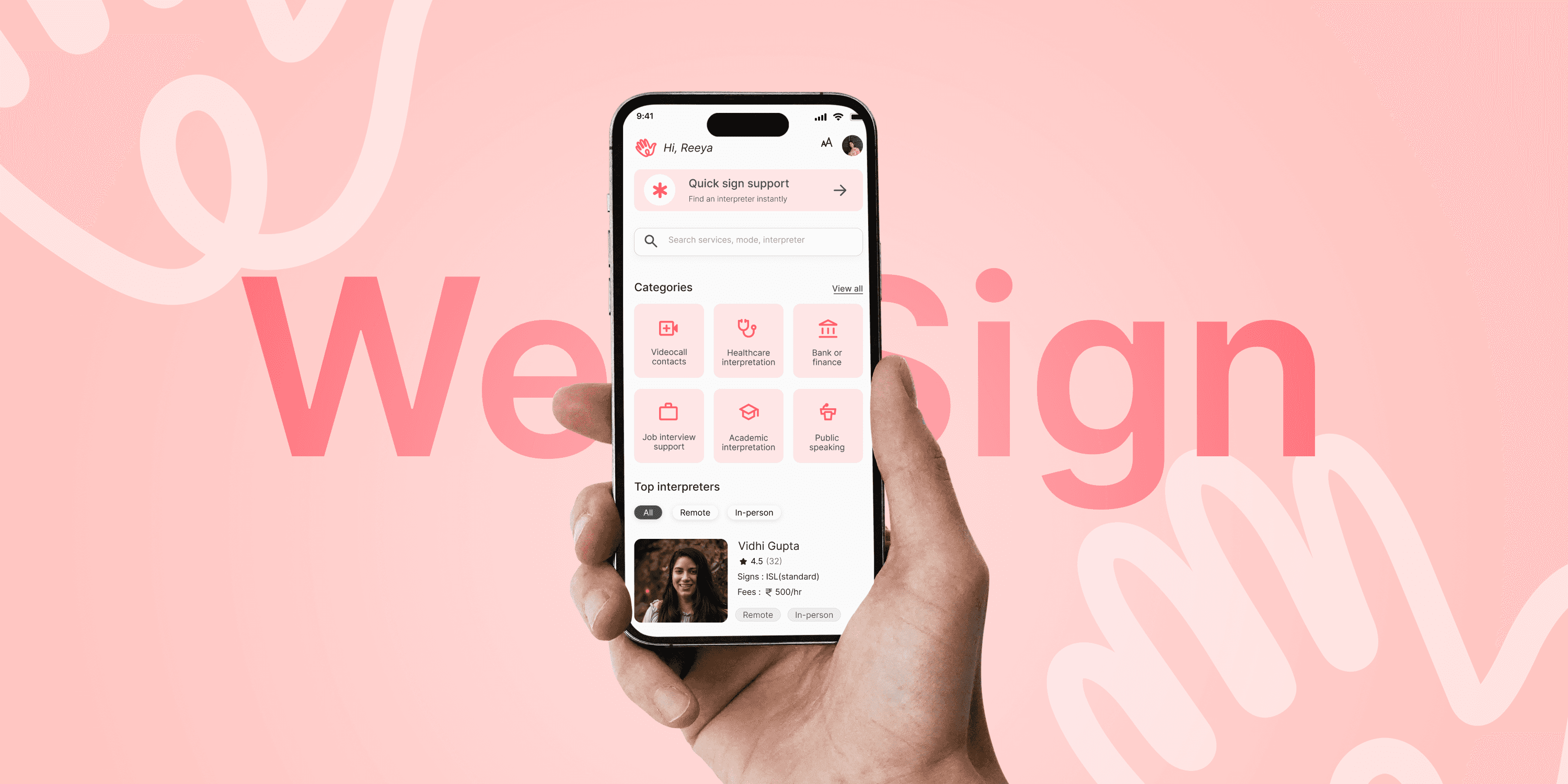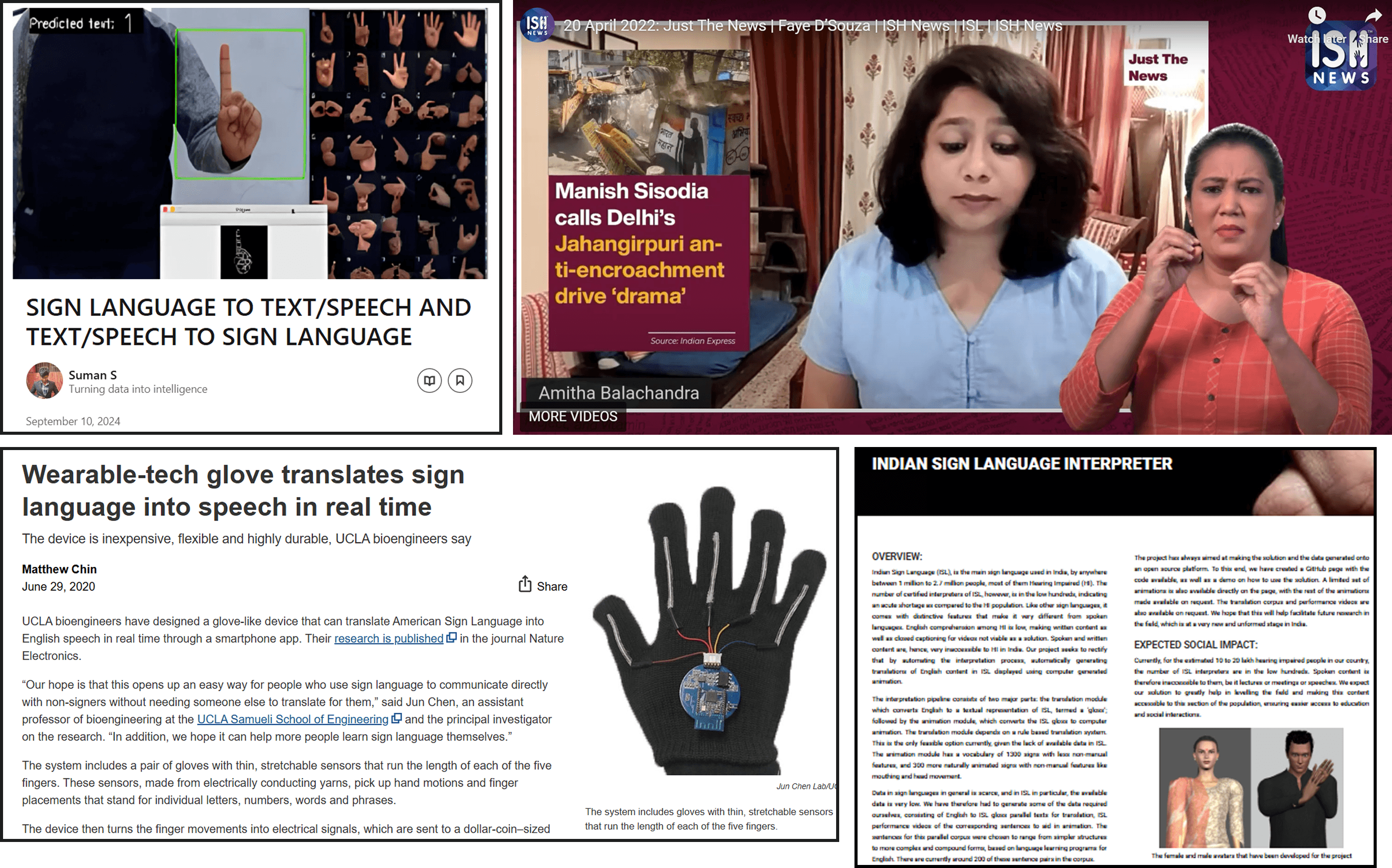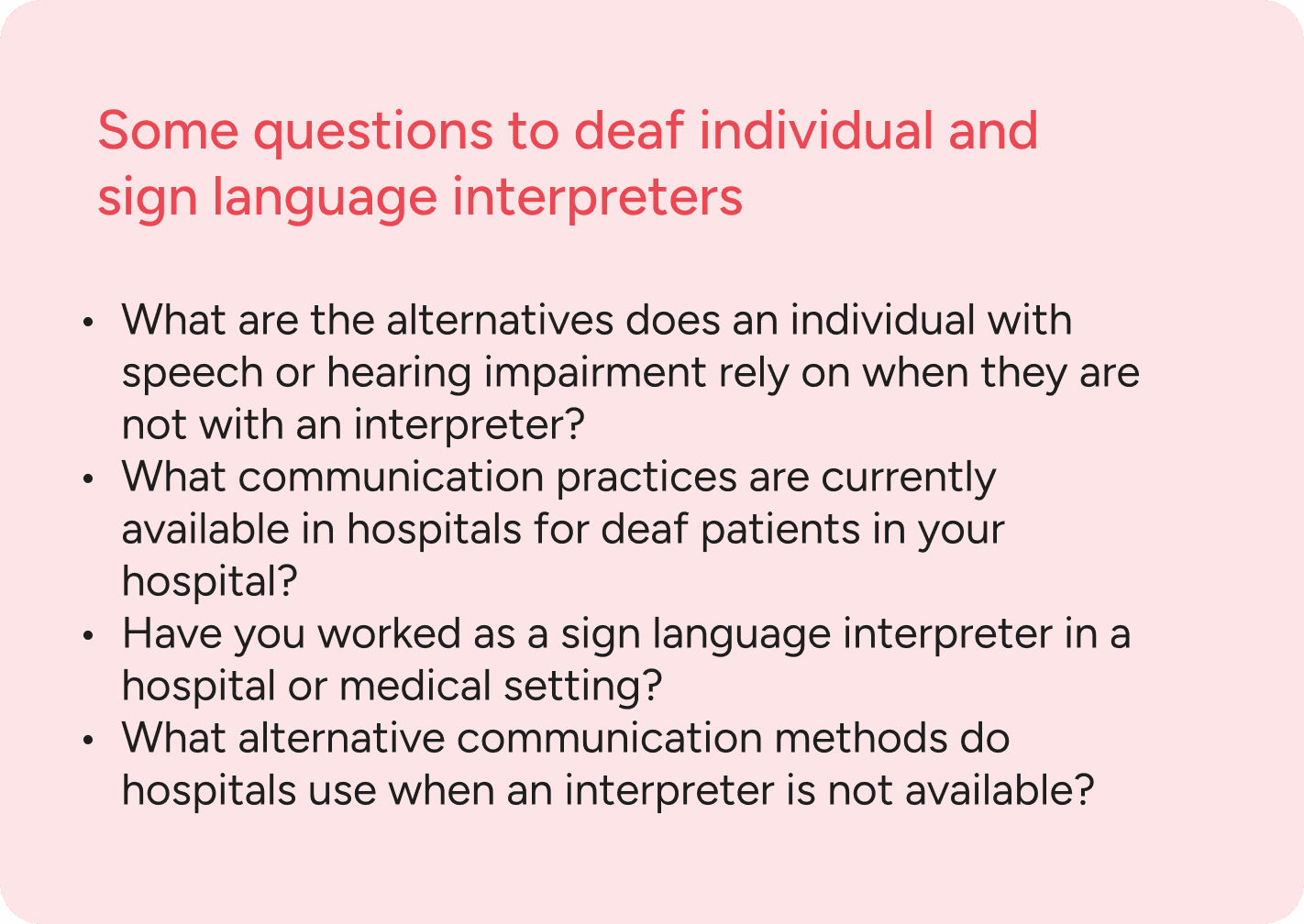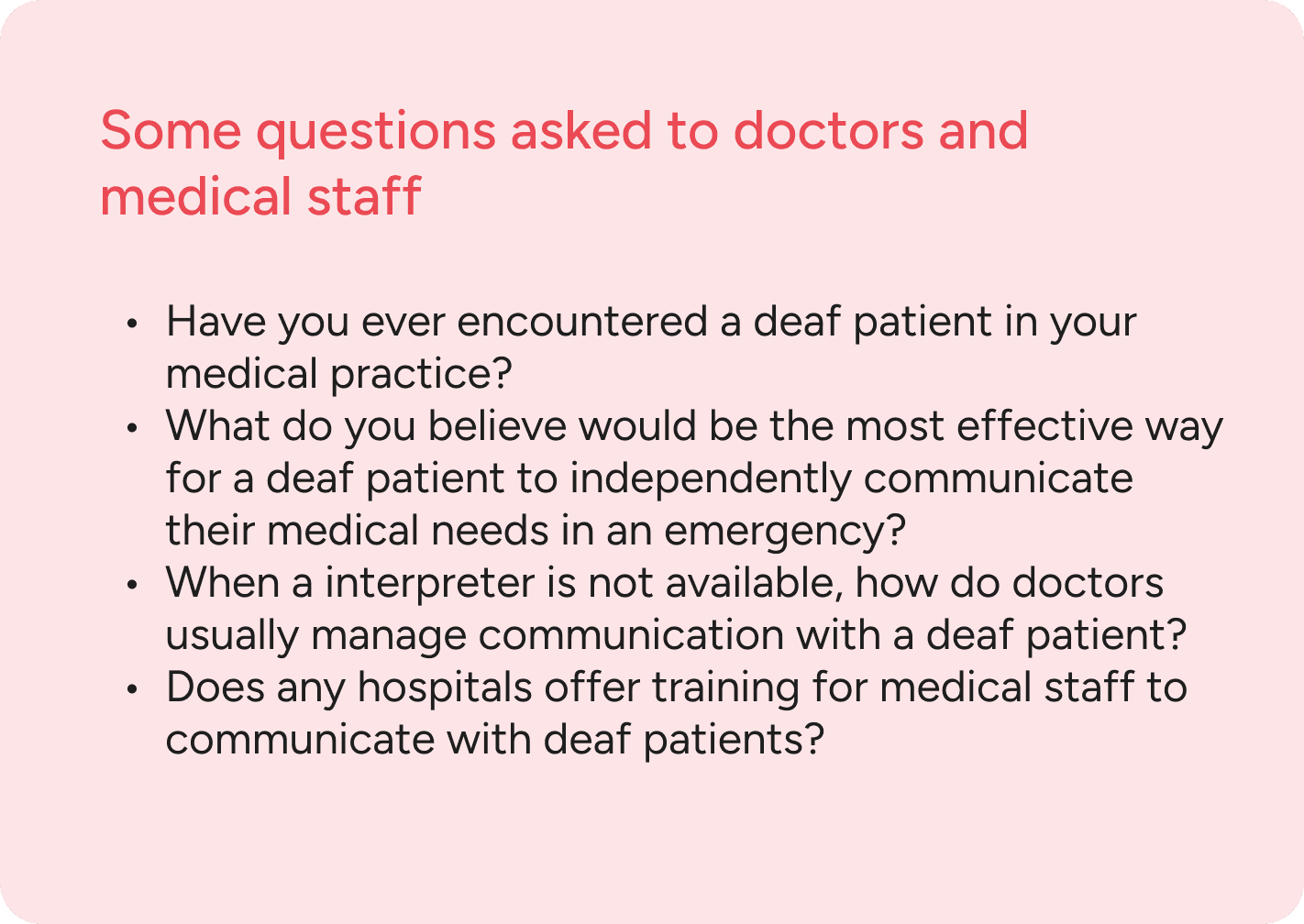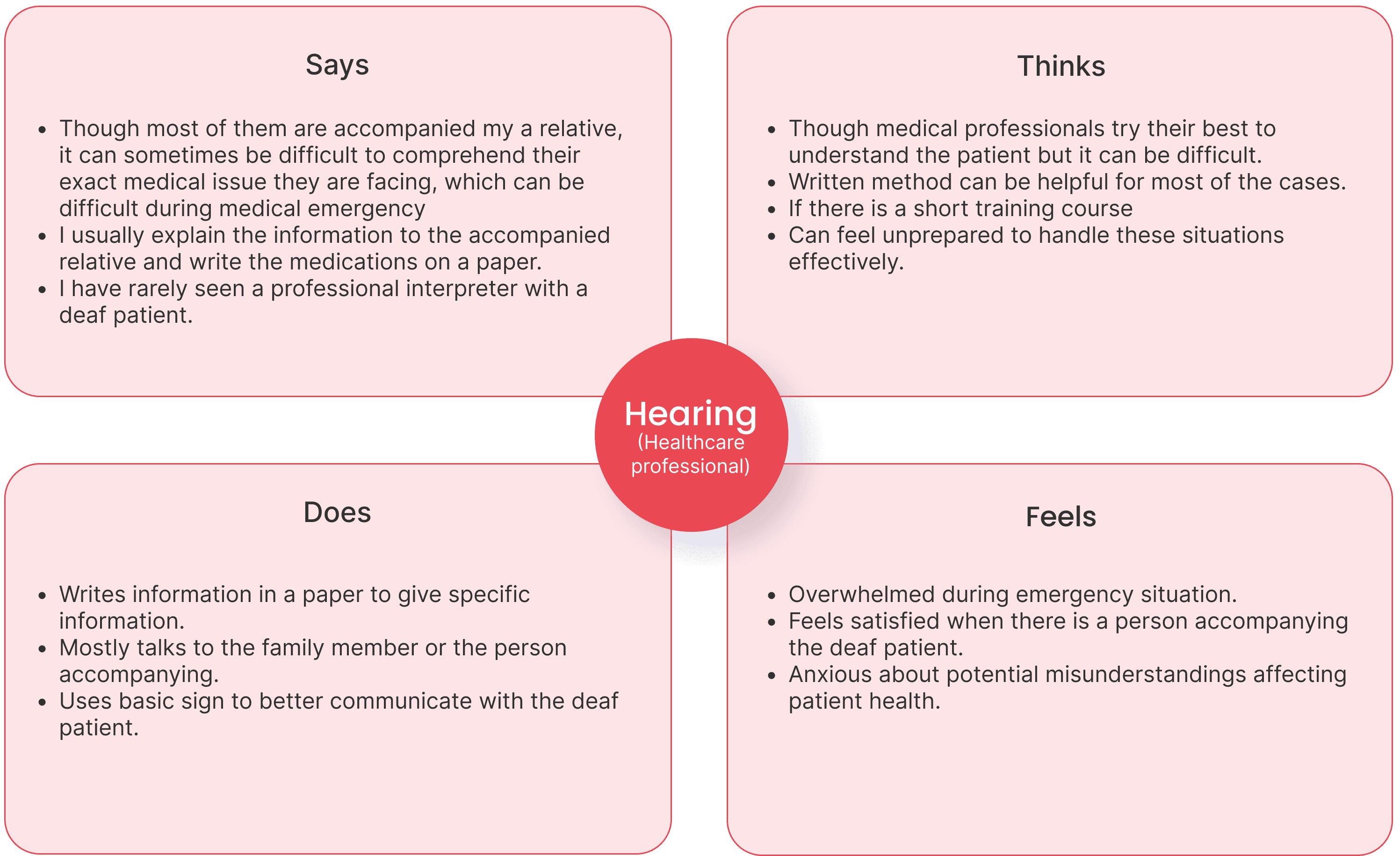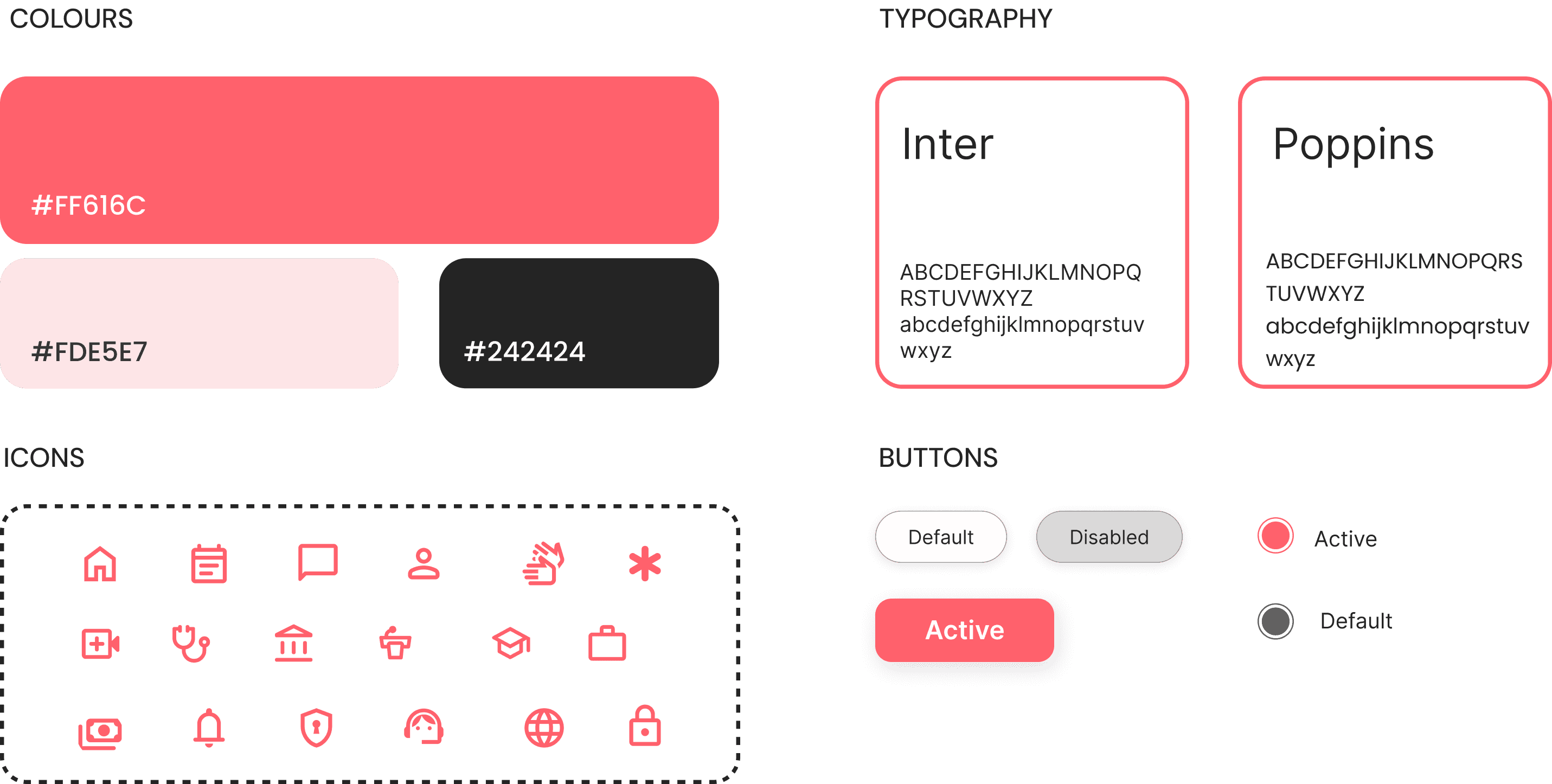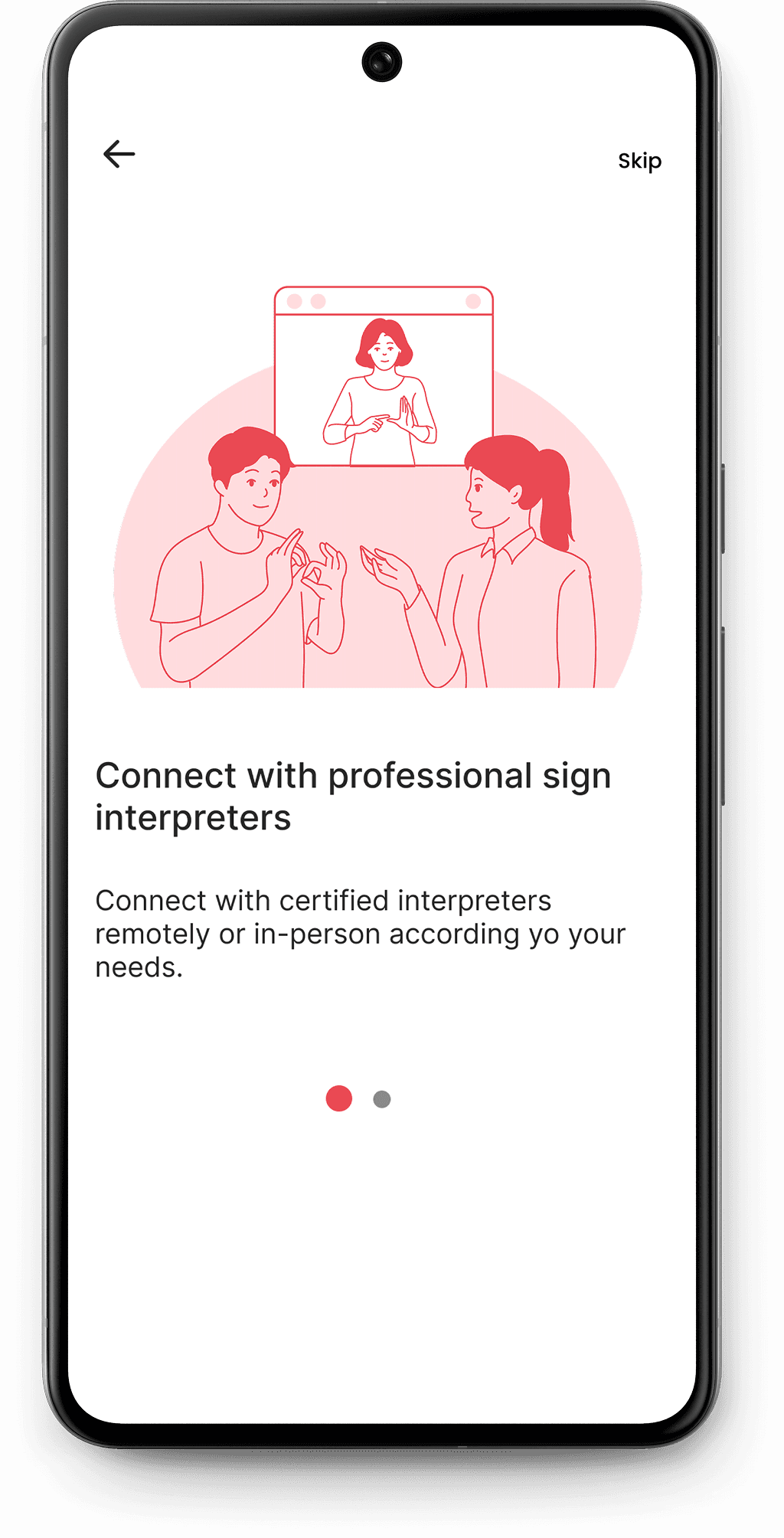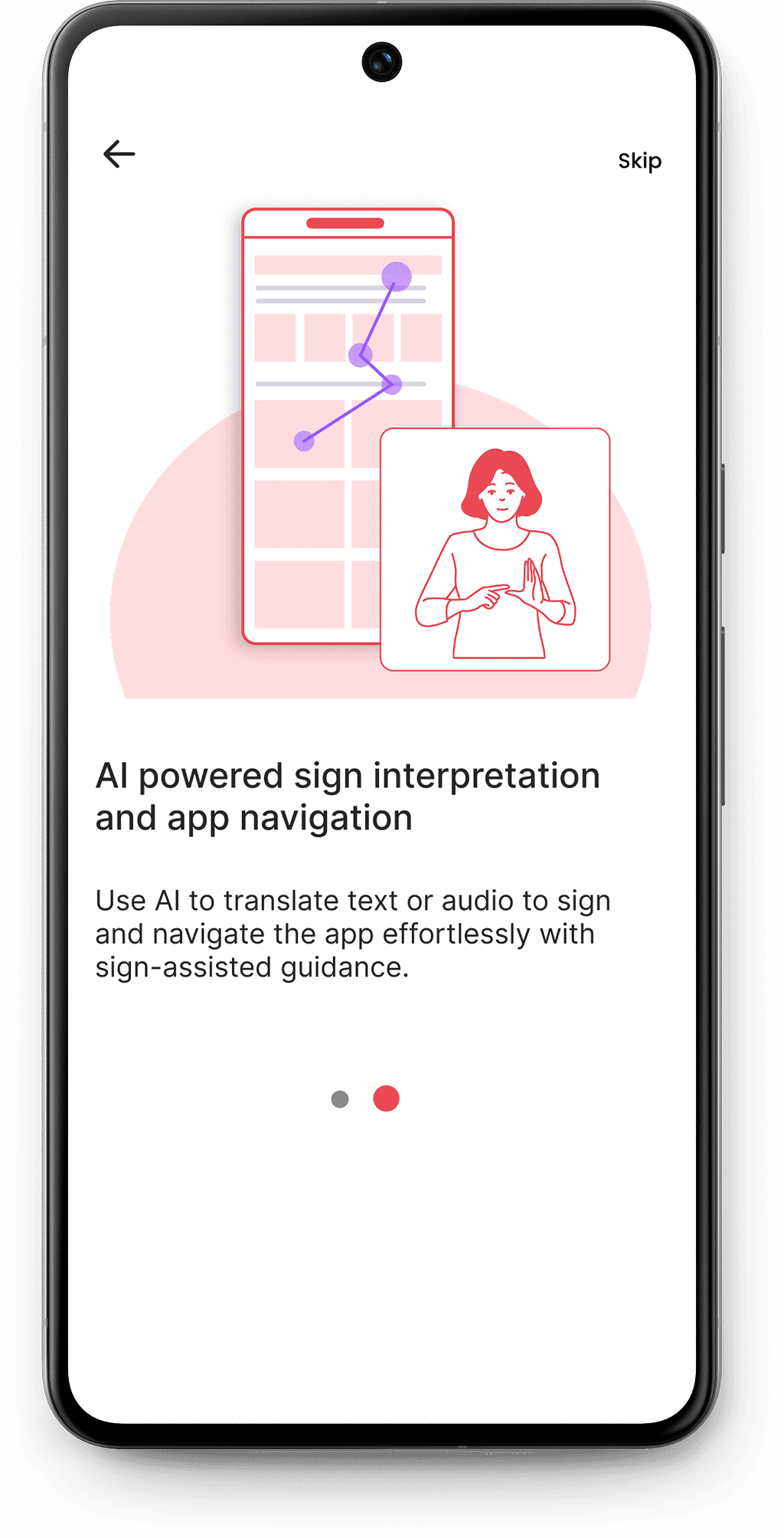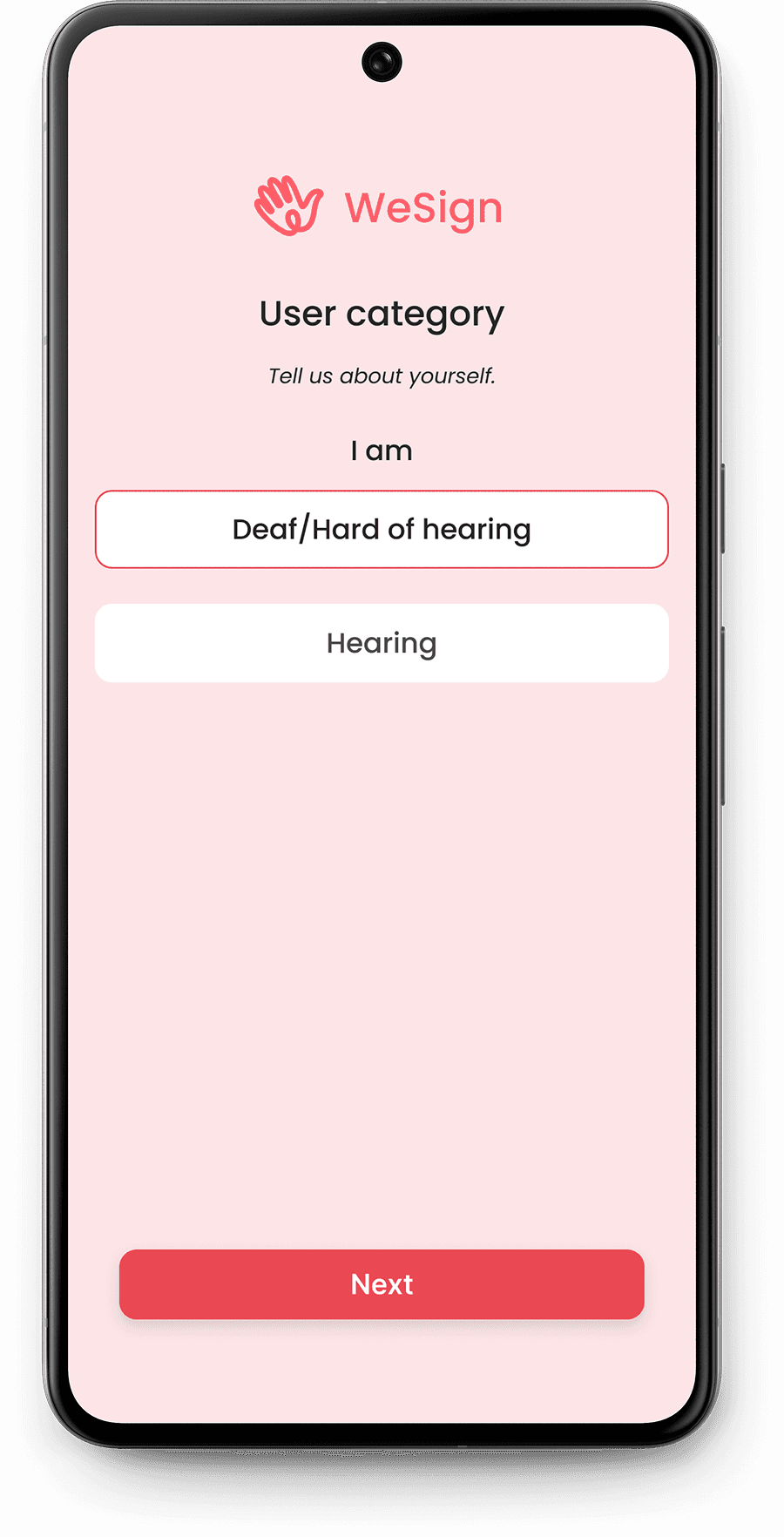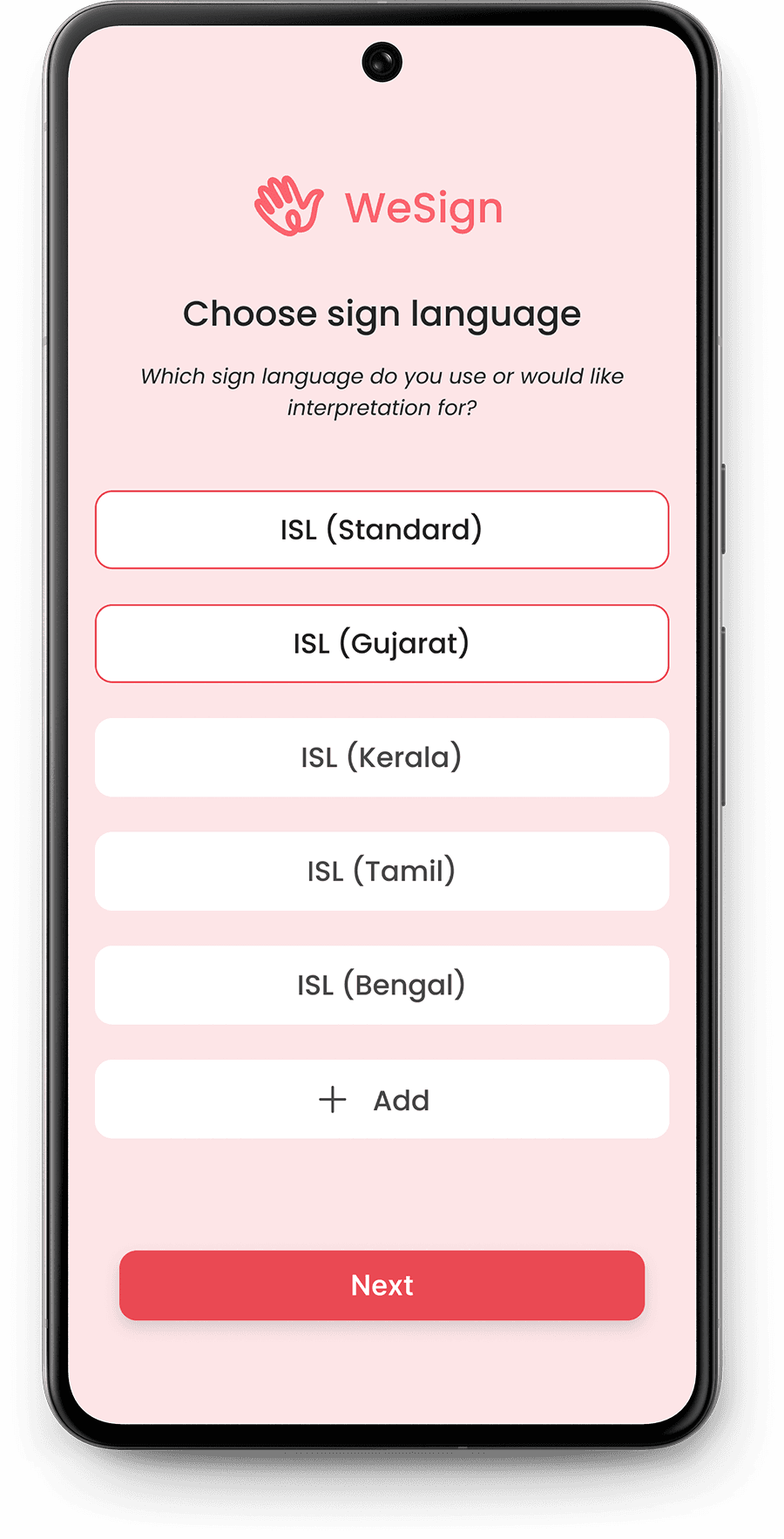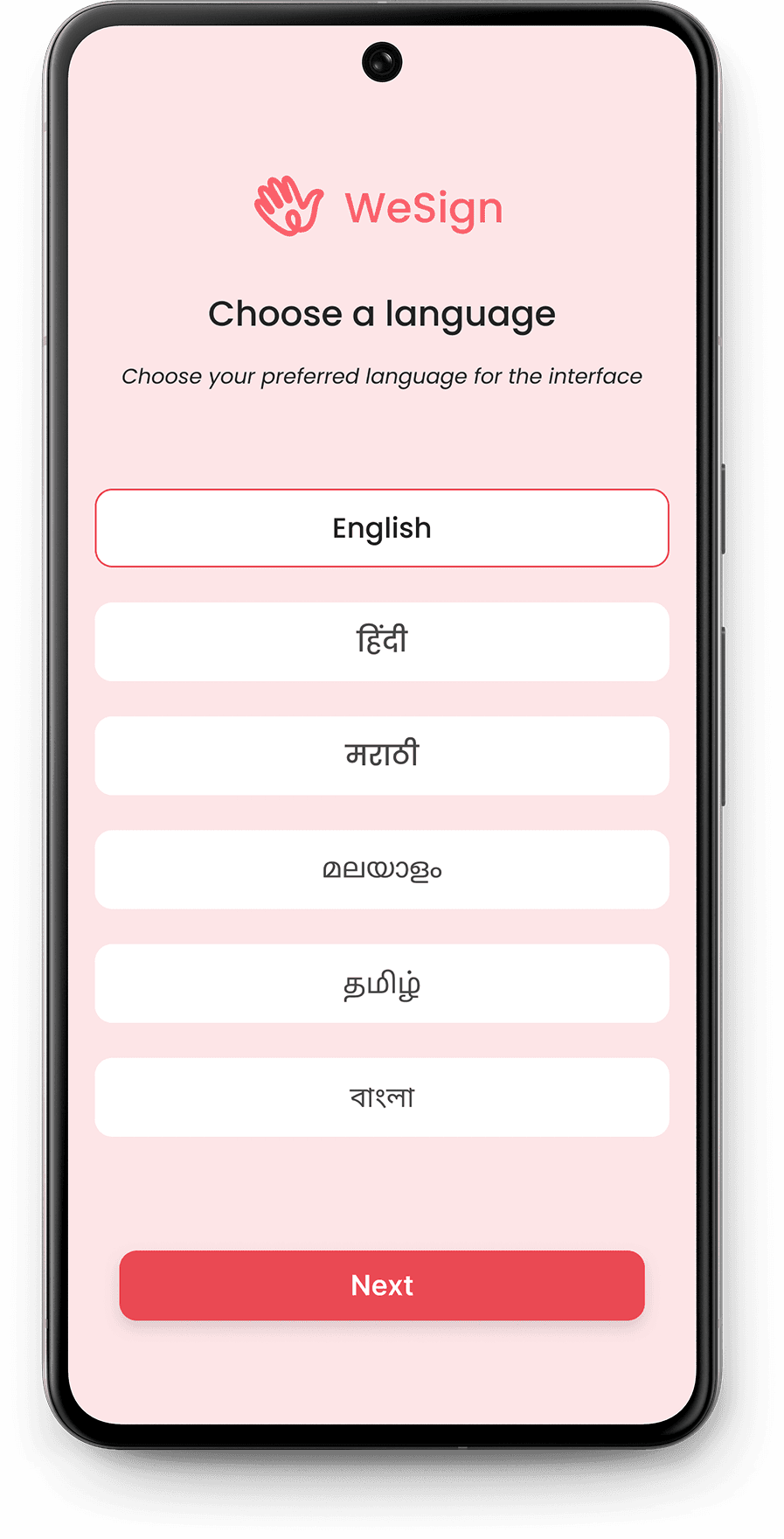SIGN LANGUAGE INTERPRETATION SUPPORT
Project type
UX case study
Duration
1 month
Design role
Research, Design
Project Overview
This project aims to design a digital platform that bridges the communication gap between the deaf and hearing communities by providing on-demand access to professional Indian Sign Language (ISL) interpreters. Through real-time video call support and scheduled in-person interpretation, the platform ensures seamless communication in essential scenarios such as bank visits, job interviews, and public speaking.
Problem identification
There has always remained a noticeable gap in services designed to assist the deaf community in communication.
For deaf individuals, communication can become significantly challenging, especially in critical situations, the lack of readily available Indian Sign Language (ISL) interpreters leads to misunderstandings, delays, and exclusion.
WHO estimates that around 4.5% of India's population, experience hearing impairment,. and the number of people who are both deaf and mute is significantly lower, estimated to be 0.2% to 0.5% of India's population.
Despite such significant population who rely on sign language for communication, only a small fraction of the population is proficient in sign language. This communication gap makes it challenging for the deaf community to interact with the wider society.
Approach
Secondary research
To understand existing accessible communication services and interventions, an in-depth analysis of available technologies, solutions, and research studies. This included exploring AI-powered sign language recognition, motion-capture gloves, computer vision models, and platforms that translated media and information in sign.
Primary research
Expert interview
Engaging with individuals from deaf community, sign language interpreters, special education teachers, and accessibility experts to understand existing challenges, current solutions, and potential areas for improvement in medical communication for deaf individuals.
User survey
KEY INSIGHTS
PAIN POINTS
Empathy mapping
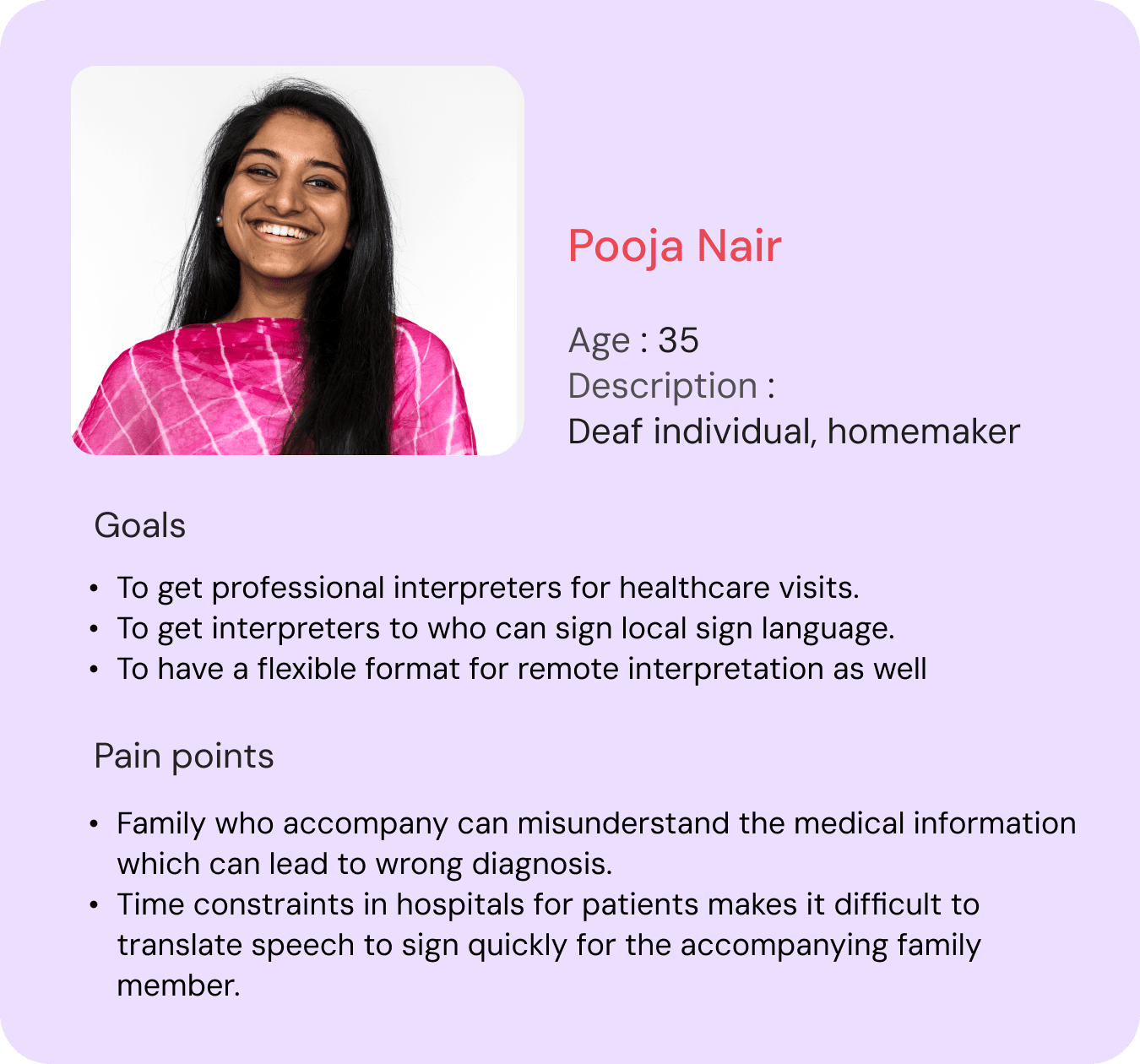
Problem statement
How might we create an accessible and reliable system that bridges the communication gap between the Deaf community and non-signers, ensuring accurate, real-time interpretation and fostering greater social inclusion?
Information architecture
Wireframes
Low fidelity mockups
Design system
High fidelity mockups
Onboarding
Main user flow
Quick sign interpretation support and profile
Instantly connect with an available ISL interpreter for urgent situations, ensuring seamless communication when you need it most.
Other screens
Way forward
Design takeways
Throughout the research process, I realized that there are many misconceptions and a general lack of awareness about sign language and the deaf community. These misunderstandings often contribute to barriers in communication and accessibility. This platform not only bridges the communication gap by providing instant interpreter access and AI-driven sign language translation but also serves as a tool for increasing awareness. By integrating technology with accessibility, it empowers the community, promotes inclusivity, and fosters a more informed and connected society.
